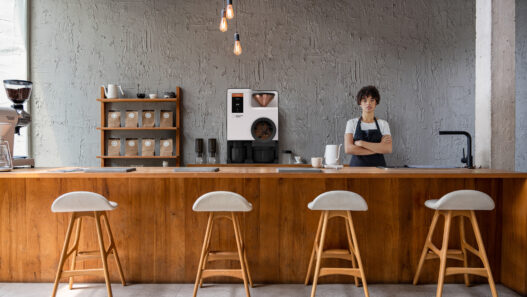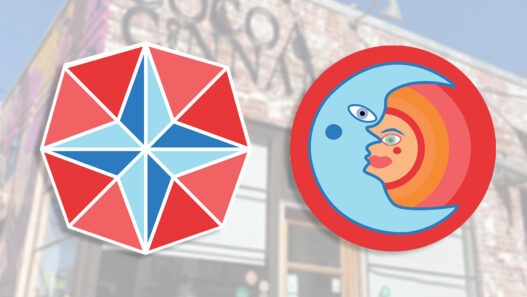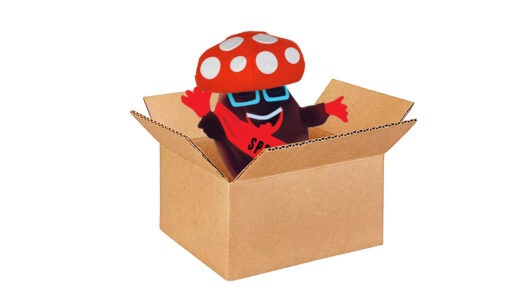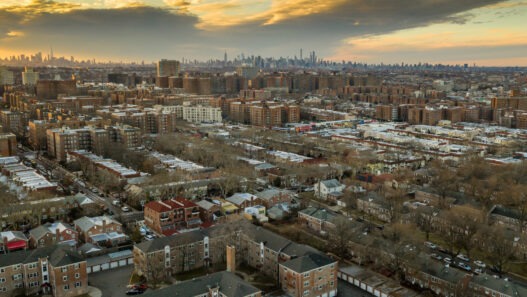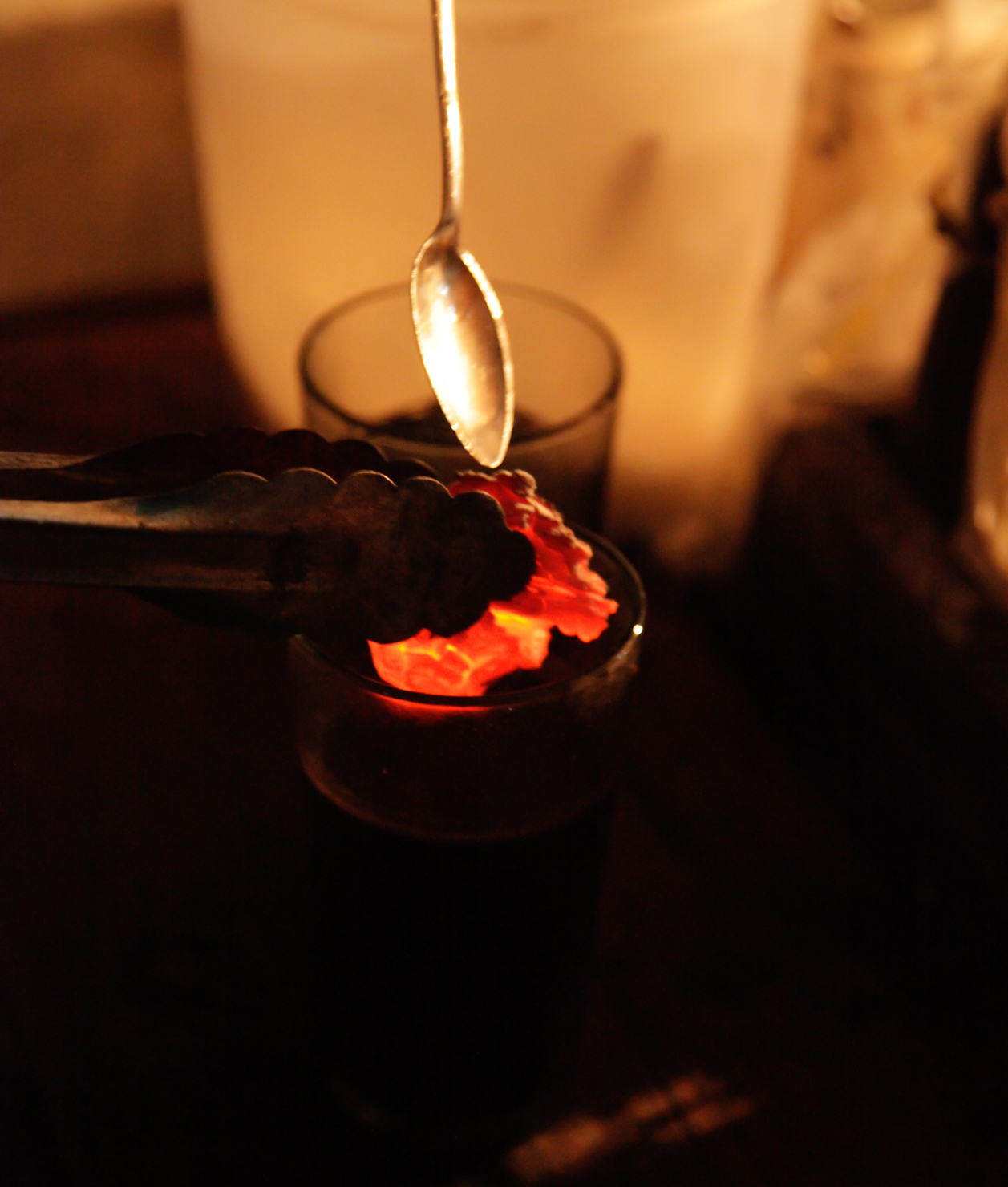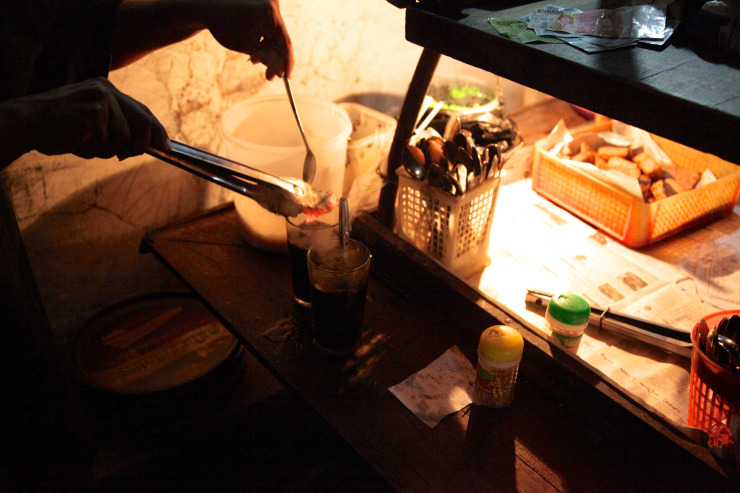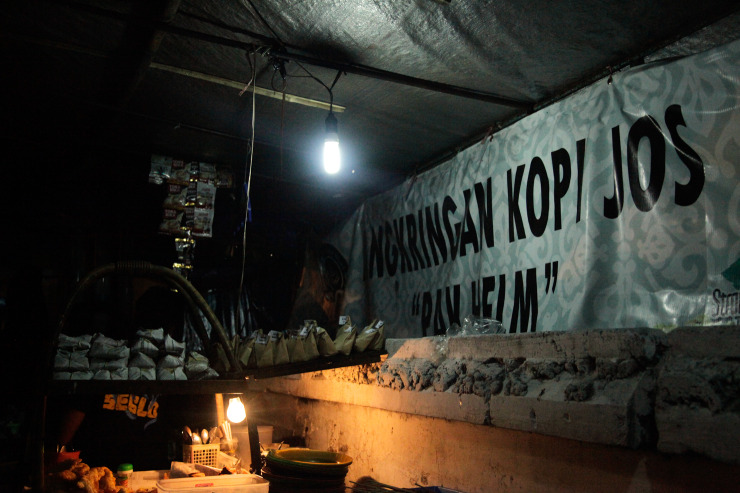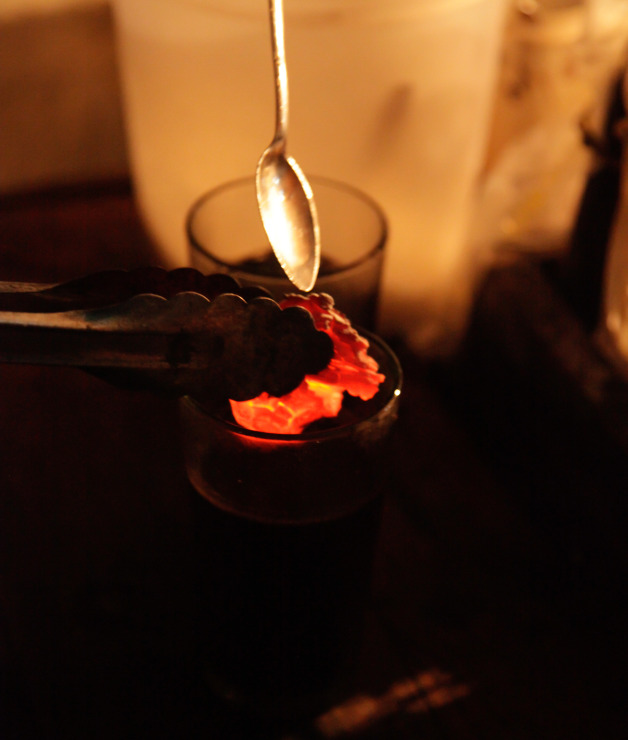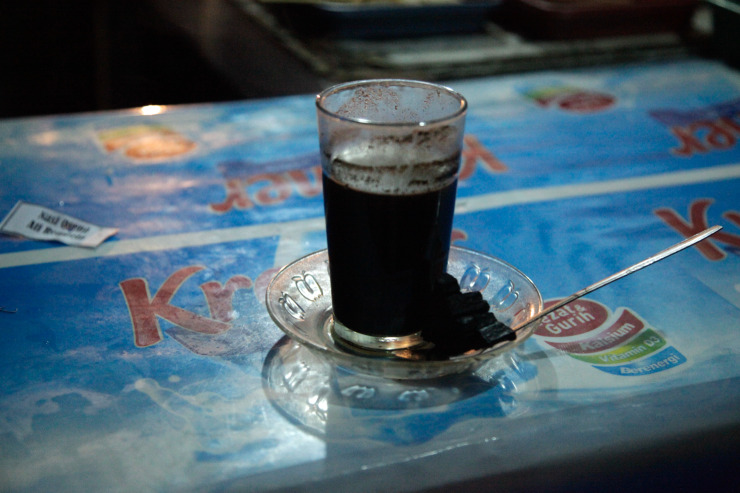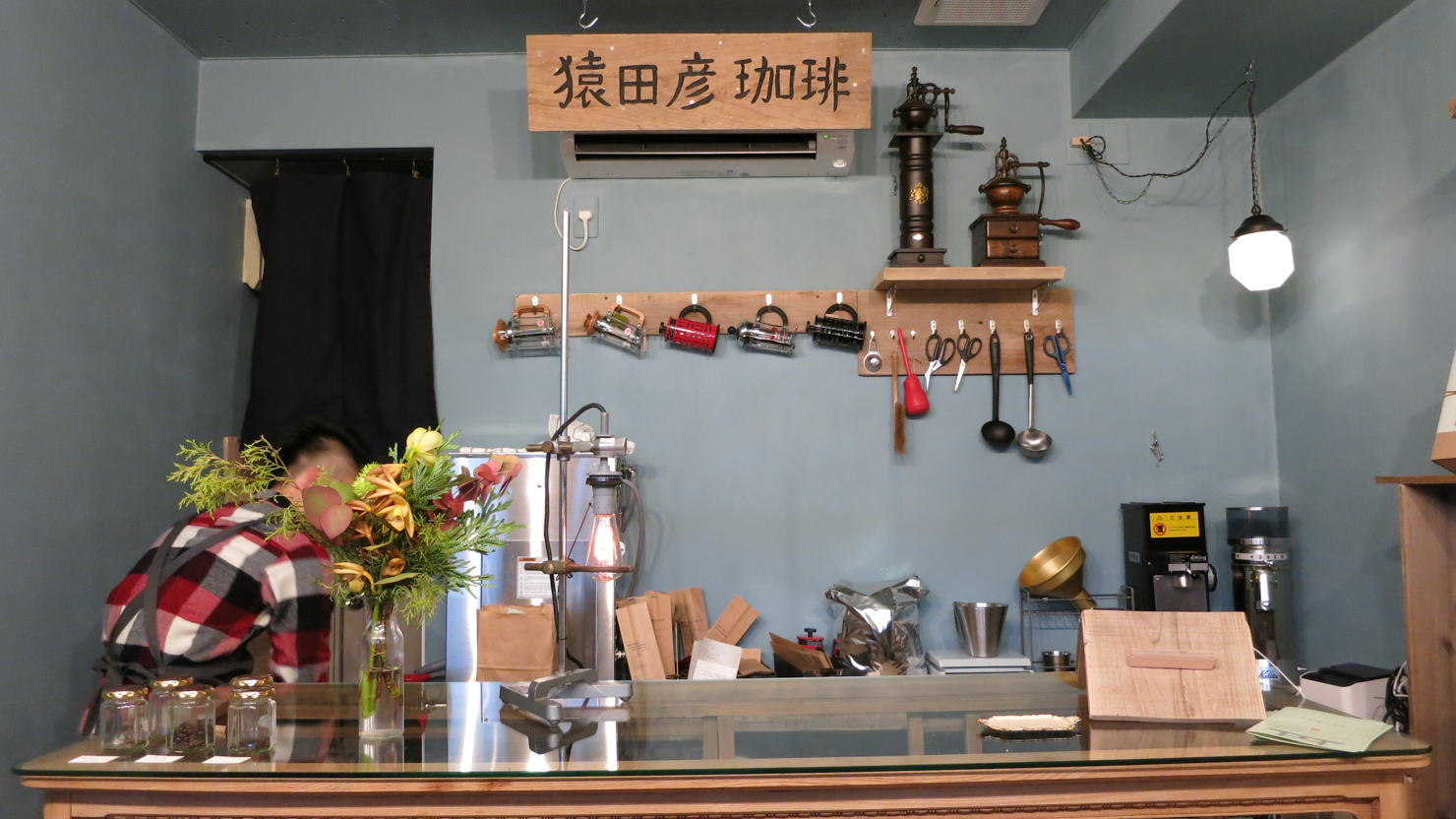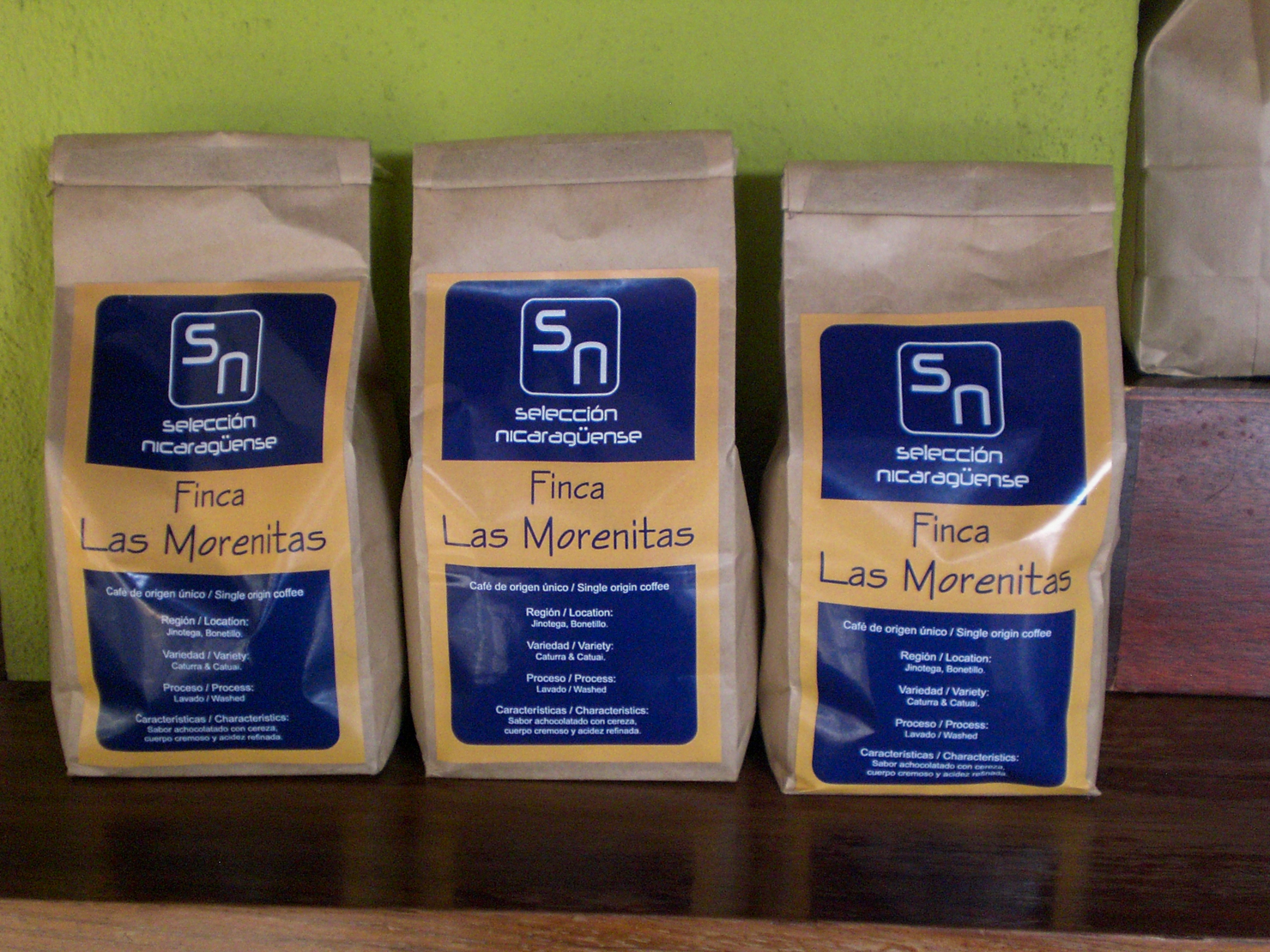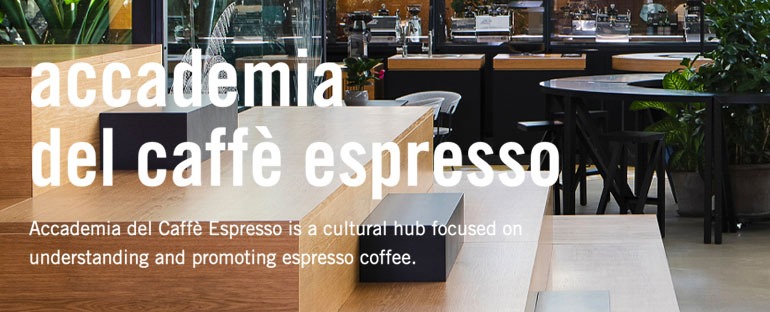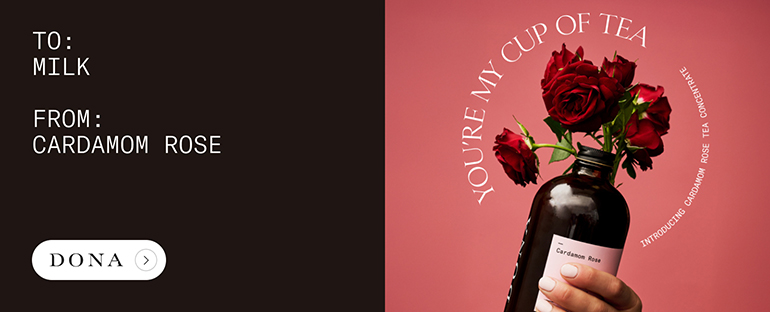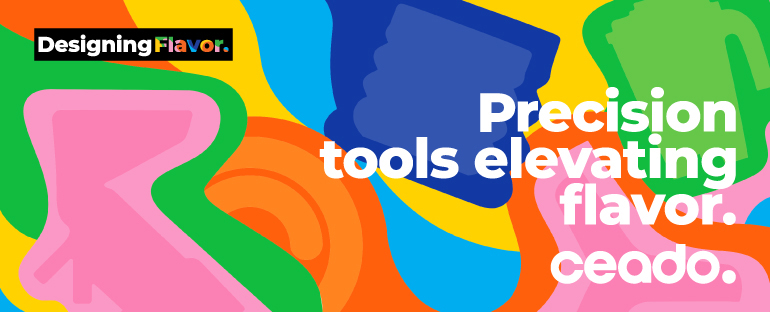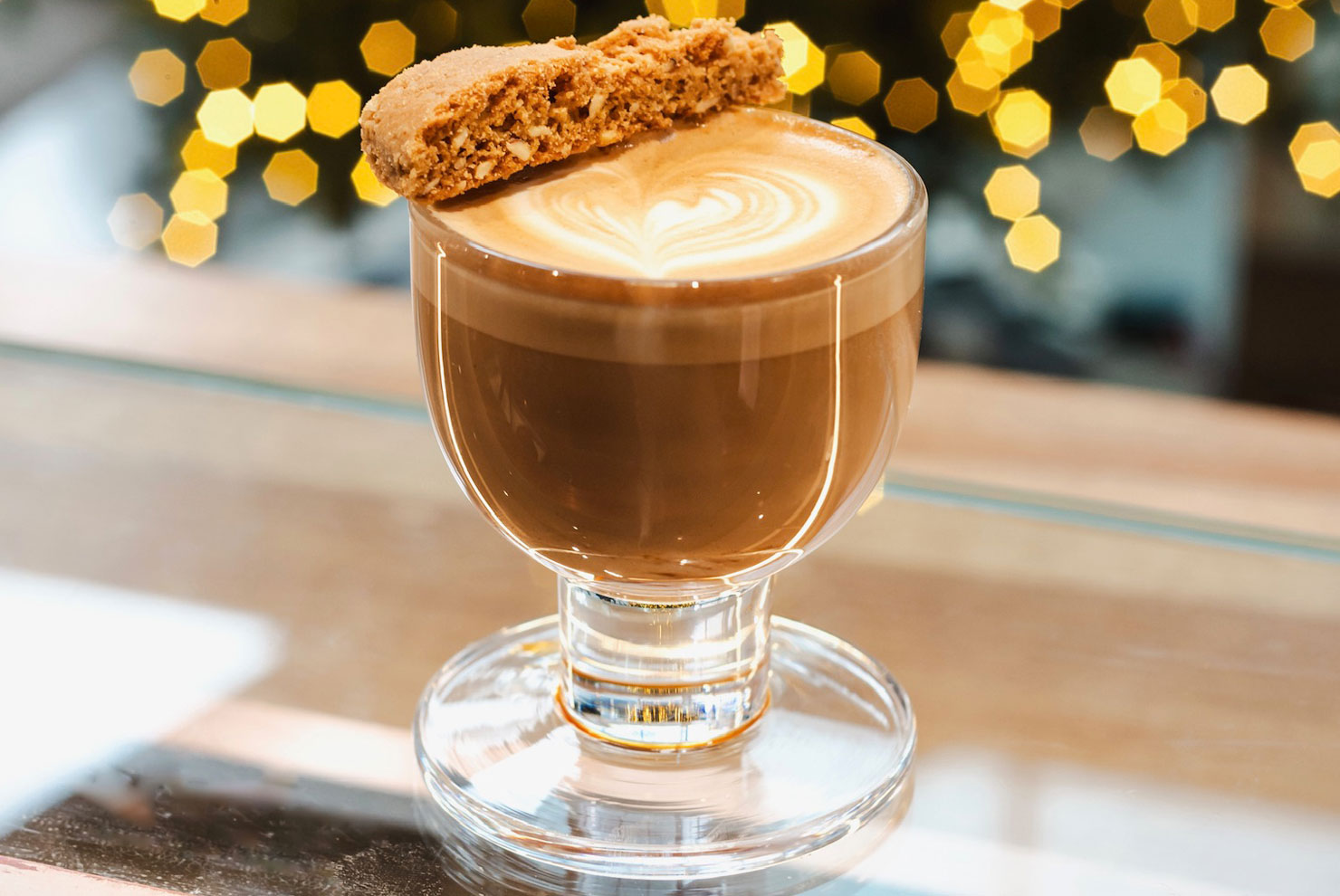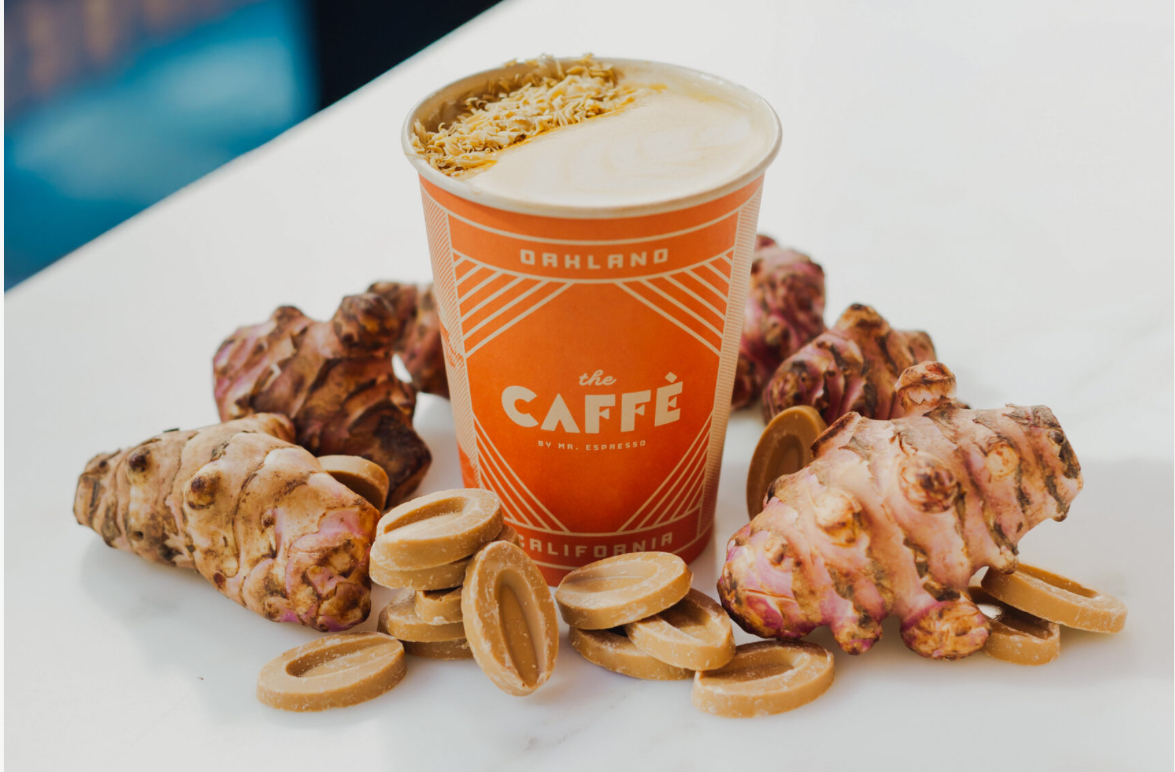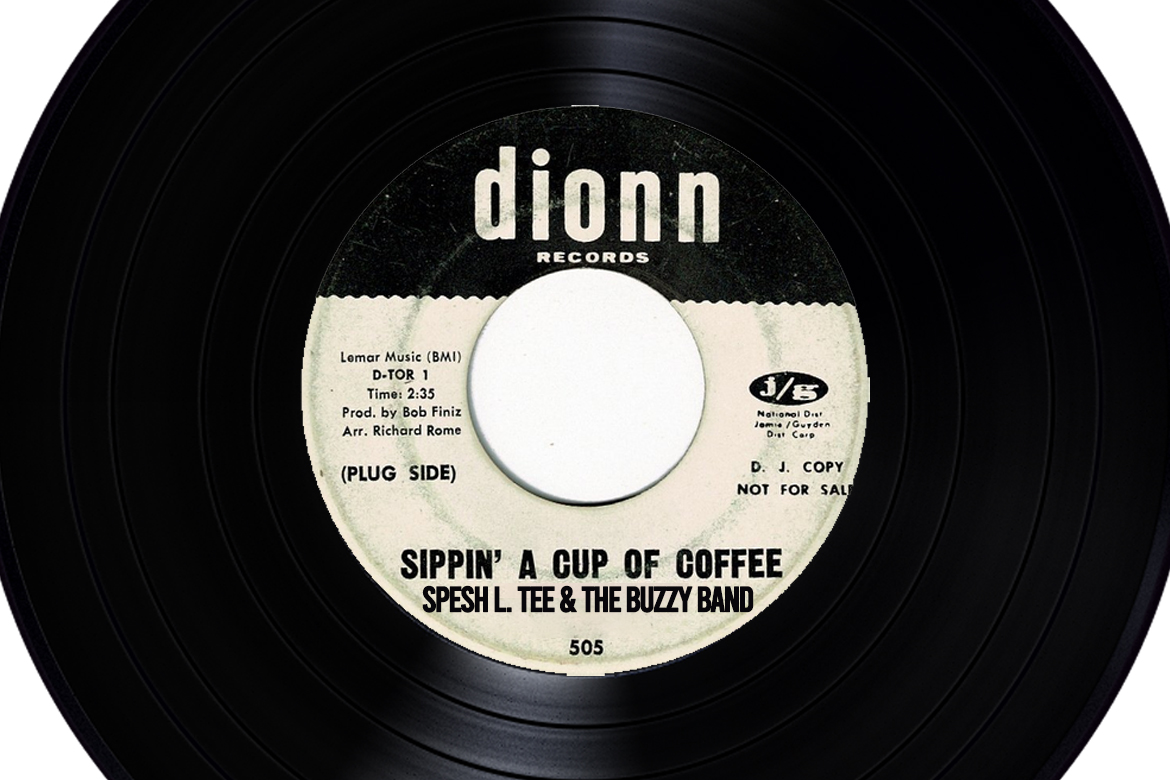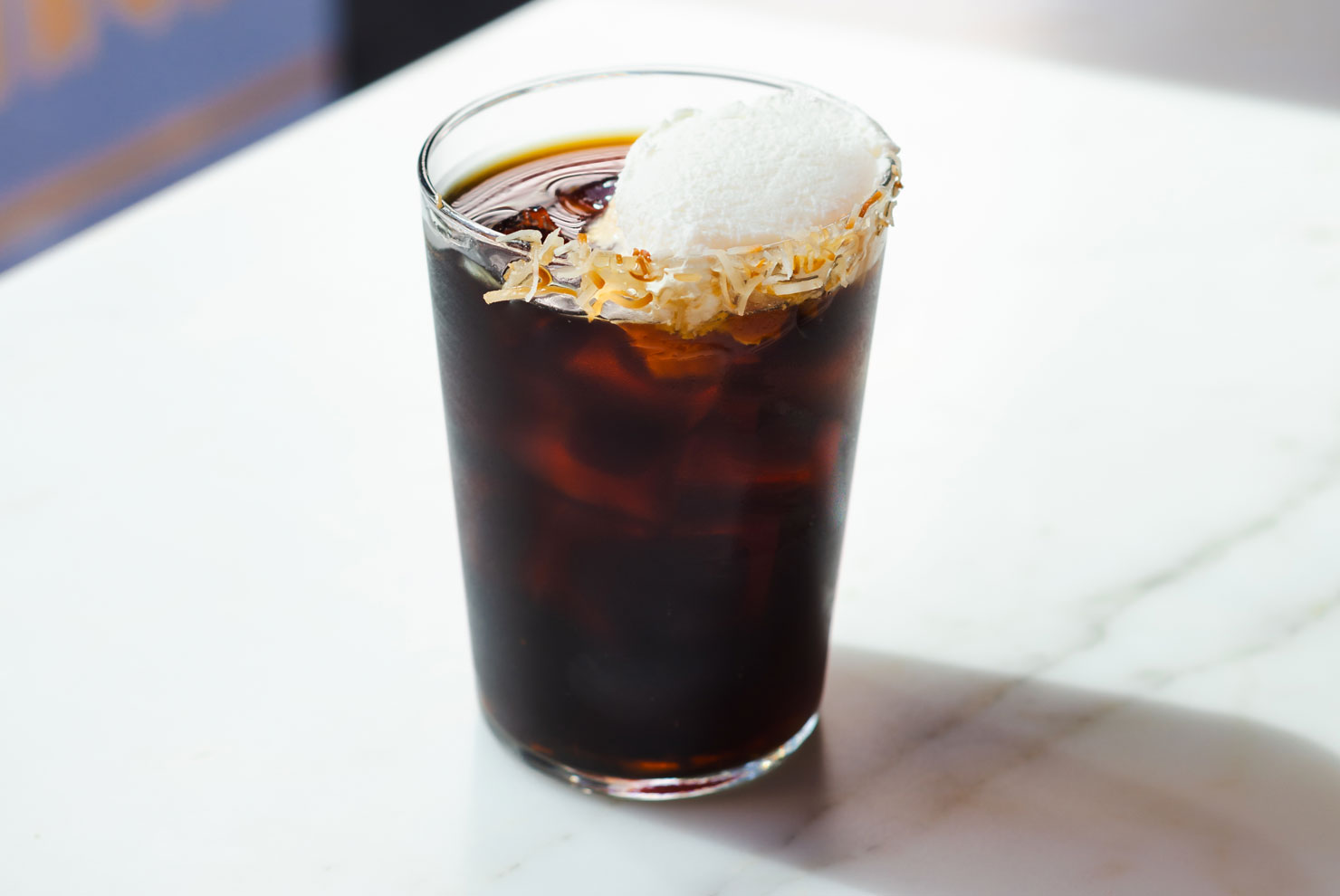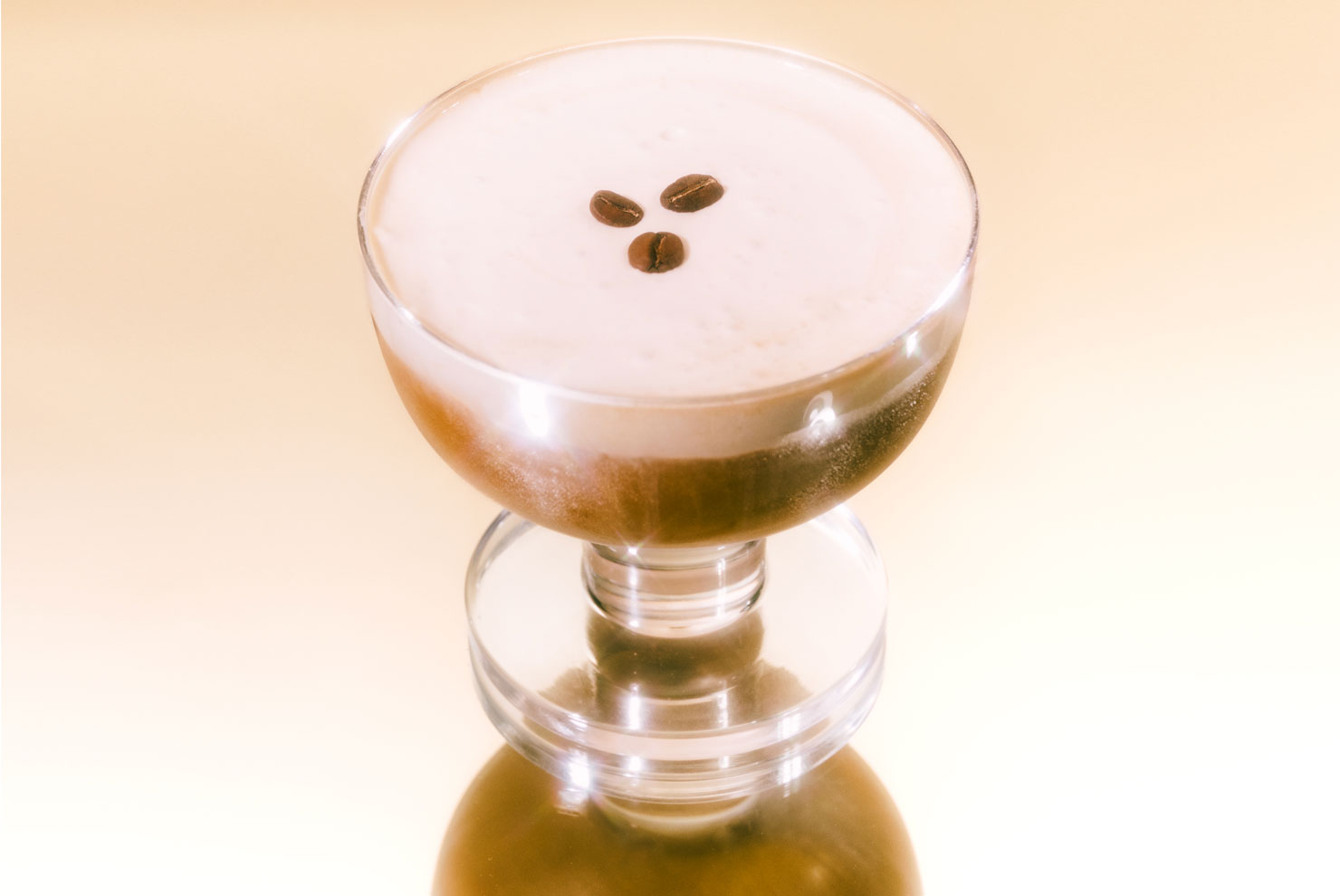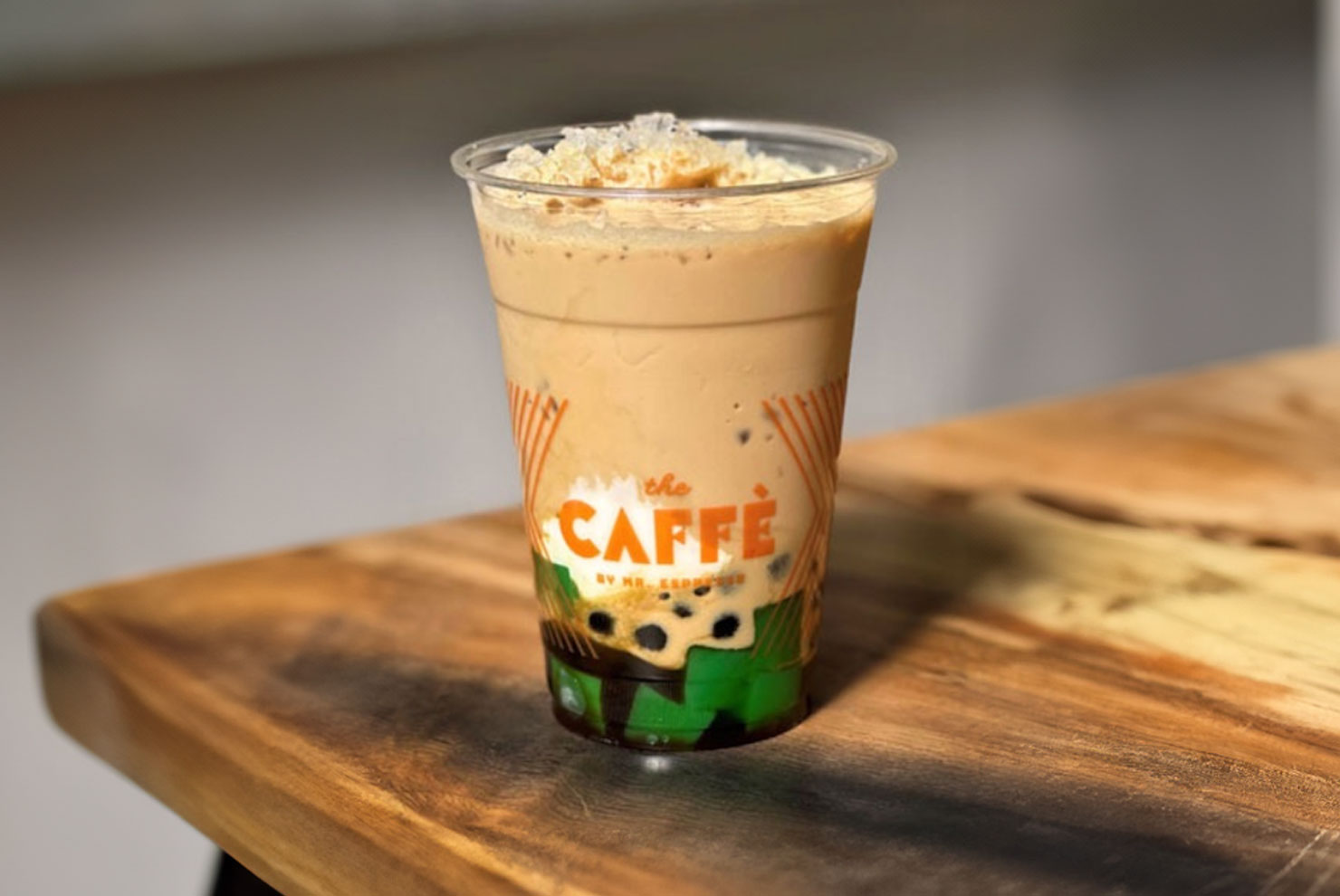It was pouring. Not Pacific Northwest downpour pouring. Tropical, in your face, hot and sloppy wet downpour pouring. Even the ultra performance Gore-Tex jacket wasn’t getting the job done. I realized I would have been better suited in the cheap poncho the guy at the corner had been trying to sell me. At the very least, I would have fit in with the locals a little better. The deluge came down, and the only solace to be had was in the stalls of Malioboro Road, Yogyakarta’s answer to Bangkok’s night markets, with just as many tacky souvenir tshirts.
I had spent the day walking all across Yogyakarta, Indonesia—Jogja as the locals call it—my end goal being the train station. Yes, there was a ticket that needed to be purchased but more importantly, there was the promise of charcoal coffee. Kopi joss. In retrospect, I don’t even remember how I came across a mention of this local novelty, but somewhere in a Google search trying to see if there was any craft coffee in Yogyakarta I had stumbled upon a blog post outlining the experience of charcoal coffee.
Let’s get one thing straight: kopi joss is no fancy term for a drink served in an artisan craft roaster space. No, this is coffee served in side-of-the-road food stalls. Coffee with a red hot piece of coal dunked in. I had to try it for myself.
“Oh yeah, charcoal coffee,” said the owner of the house I was staying in, an Indonesian man who the night before had taken my partner and I to a live music night at a local bar to watch Indonesians belt out Beatles and Nirvana ballads. This was a man that was obviously in the know. “It’s the street just north of the train station. There are lots of people selling it, they start setting up around 5:30pm. Just be sure to not get sugar in it,” he said.
I was about to go and track down coffee with charcoal in it, and this guy was concerned that my drink might be too sweet for me.
After buying the obligatory train ticket, we made our way to the street north of Tugu train station that houses a string of angkringan, food stalls selling an assortment of cheap foods and rice. It was here that there was a promise of kopi joss.
At this time night had fully hit, and the stalls lining the road were dimly lit with lanterns, inviting locals in for the night. People had already started to congregate. Two water-soaked foreigners must have been quite the sight, and when I asked if we could get kopi joss, the owner smiled and nodded, “yes, yes, yes.” He was kind enough to take his time making the kopi joss so that I could take photos, carefully holding the red hot coal above the coffee before plopping it in.
It fizzed, sputtered and smoked, and the man handed the two glasses to me. I sat down with them, then realized I didn’t really know what I was doing. I had read that you were supposed to take the charcoal out before drinking.
With the help of many hand motions, I asked the man if I needed to let it sit before I took the charcoal out.
“One minute!”
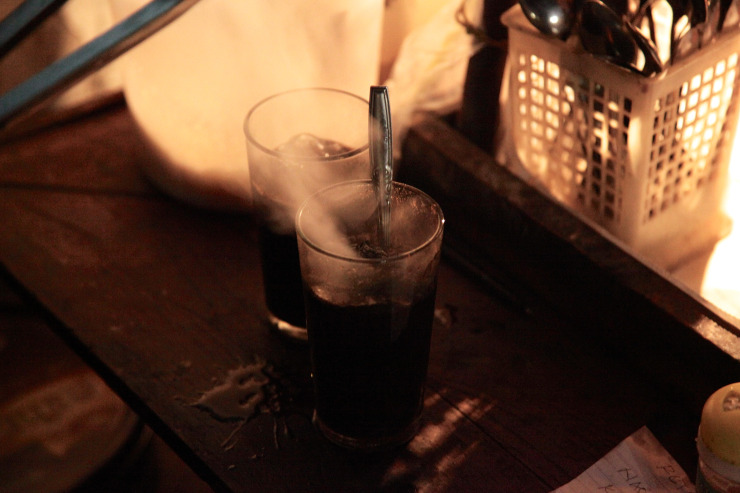
A woman sitting across from me, gave me a huge smile and pointed to the glass of coffee. “It good!” I don’t know if she meant taste wise, or good for me, but at least I could be happy knowing that we were giving these locals some entertainment for the evening.
After the minute had passed, I removed the down black charcoal from the glass with a long spoon. I looked at my boyfriend and raised my eyebrows, sort of a “are we really doing this?” type of look.
Later on a friend would ask about the tasting notes. Carbony? Sure, maybe with a hint of carcinogens.
Kidding. Actually, charcoal does have some health benefits, as it helps to neutralize stomach acid. The theory is that dunking it in the coffee helps neutralize the acidity of the coffee, or at least helps you palate the taste of charcoal. You may have seen activated charcoal being sold at health food stores, but who knows if dunking charcoal in coffee would give you the same benefits. Regardless, since one man started making it in the 1960s it has certainly taken off to become somewhat of an infamous local novelty.
The overly sweet, slightly burnt tasting coffee left us hungry, so we snagged a few bundles of nasi (rice) wrapped in newspaper and some fried tempeh and called it a meal.
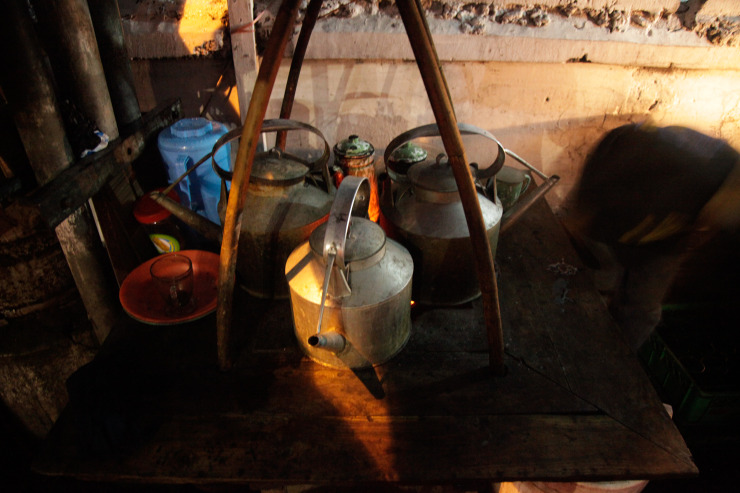
Before leaving, I asked the stall owner how the coffee was made, whether he was using grounds or, in my worst nightmare scenario, instant coffee. “Ask” is a generous use of the word. With my non-existent Indonesian and his limited English, it was more of a mini round of charades. But finally he understood what I was getting at. He showed me a tupperware full of finely ground coffee. “Morning coffee!” he exclaimed, as if that was the most obvious thing in the world.
Of course, morning coffee. The perfect thing to go with a dark and rainy night.
Anna Brones (@annabrones) is a Sprudge.com desk writer based in Paris, and the founder of Foodie Underground. Read more Anna Brones on Sprudge.
All photos by Anna Brones.









